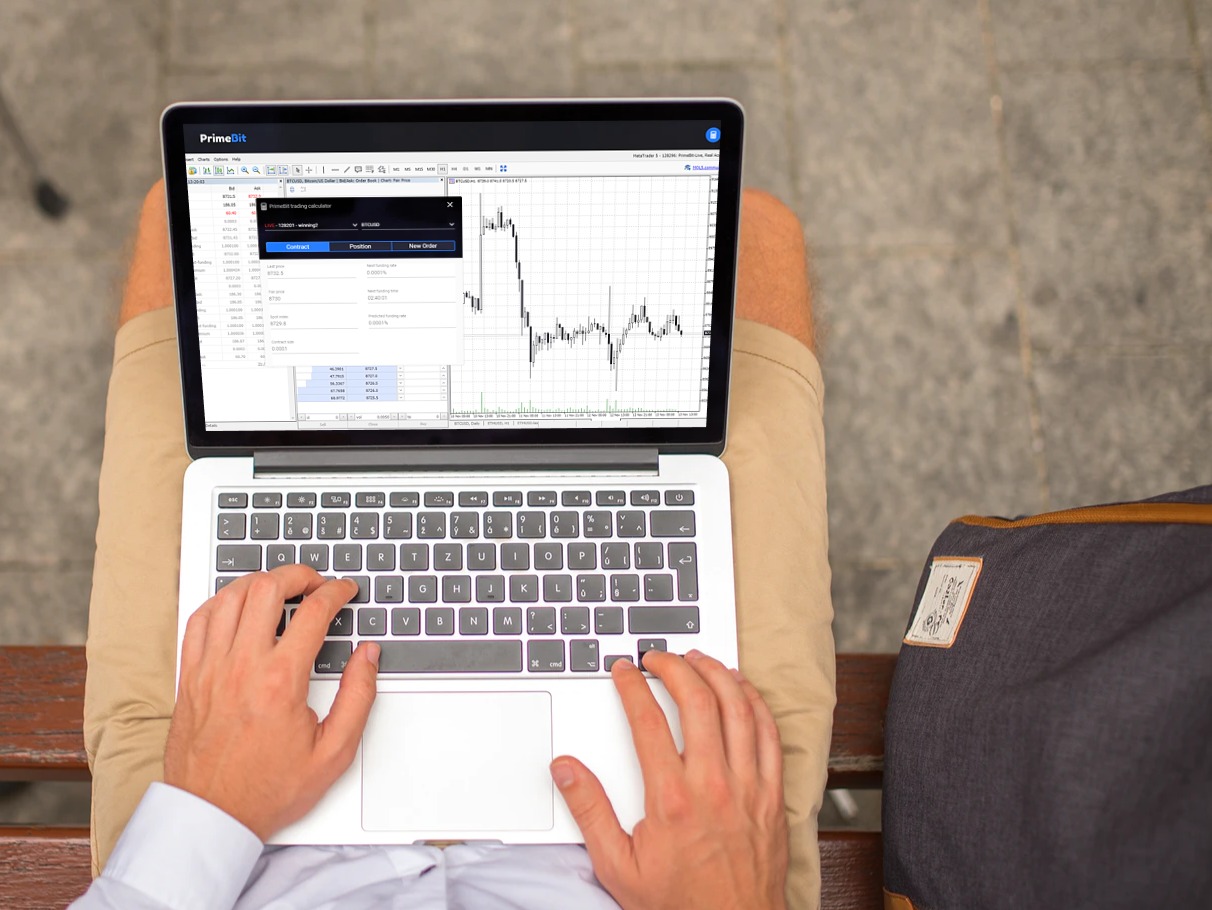On both BitMEX and PrimeBit, you can open long and short positions on Bitcoin and other cryptocurrencies with high leverage. PrimeBit offers you a wide range of possible leverage levels. You can choose for your trades any leverage from 1x up to 200x on all cryptocurrencies.
Unlimited Profit with Capped Risk
BitMEX allows you to trade Bitcoin with 100x, Ethereum with 50x leverage, and Litecoin with 33x leverage. Why can’t BitMEX offer better margin trading conditions? The trick is all about the way the contracts are handled on both platforms.
BitMEX and PrimeBit contracts are so attractive because they give you unlimited profits with limited loss. It’s a great win that limits the risks the traders take. If you take a long position and the price goes up, you keep on profiting. At the same time, if the price goes down, your losses cannot exceed the initial margin.
The Controversial Insurance Fund
Cryptocurrency trading platforms need to find a way to do it. Both BitMEX and PrimeBit set a Liquidation Price, which is a little bit above the Bankruptcy Price (in case of long positions) and a little bit below the bankruptcy price (in case of short positions). When the market price goes against your position and goes through the Liquidation Price approaching the Bankruptcy Price, the platform takes over the trader’s position and automatically liquidates it at market price.
Now, here’s the difference comes in. During the automatic deleveraging process, BitMEX takes the difference between the Liquidation and Bankruptcy Prices (called Maintenance Margin Requirement) and transfer it to the Insurance Fund. The money is supposed to be there to protect the interests of traders. If the effective liquidation price is lower than the bankruptcy price (in case of long positions), the gap is covered by the Insurance Fund.
As BitMEX puts it:
“The fund is used to aggress unfilled liquidation orders before they are taken over by the auto-deleveraging system.”
Partly transparent
However, it’s all about the effective liquidation process. The number of Bitcoins kept in the Insurance Fund is growing. At the moment, it has surpassed 39,890 BTC, which is worth over 280 million USD. In its almost four-year history, the Insurance Fund hasn’t been used a lot. The most significant drawdown took place on April 12, 2018, with a $5.1 million worth of BTC.
You can track the amount of BTC kept in BitMEX’s Insurance Fund here. However, the details of closing each position are not open to the public. If your position is closed automatically by BitMEX, you will learn about the Bankruptcy Price for this position in an email.
Simple deleveraging works better
Unlike BitMEX, PrimeBit does not have any form of the Insurance Fund. At PrimeBit, the contracts are always closed at the best price for the user. If there’s a negative balance risk, the position is closed at the Bankruptcy Price.
The difference between the Liquidation Price and Bankruptcy Price stays on your account. It’s sensible since if you lost your trade, there’s no reason for you to pay any additional commission.
If the effective Liquidation Price is less favorable than the Bankruptcy Price, PrimeBit initiates its automatic deleveraging procedure. PrimeBit does not liquidate positions at bankruptcy price unless the liquidation would result in a negative balance.
It means that PrimeBit does not support the concept of the Insurance Fund, which has been employed by BitMEX and most of the crypto-products trading platforms. Insurance Fund increases losses of highly-leveraged users that found themselves on the wrong side of the market.
Trading with PrimeBit, you may be sure that once forced liquidation is initiated, the user is provided with the best price possible. Users whose positions have been auto deleveraged receive an instant message to the trading platform so they may decide to re-enter the market. We also provide updates to your platform in the event your position enters/leaves the top percentile of the ADL ranking.
PrimeBit’s an excellent alternative to BitMEX
Now the Maintenance Margin Requirement changes depending on market conditions. If the volatility is low, the difference between the Liquidation Price and Bankruptcy price (the MMR) is usually smaller. When the prices start to move, the MMR goes up. That is why you should use the high leverage (or at least start using it) when the volatility relatively low.
If you are trading with high leverage on BitMEX, half of your initial margin may be, in fact, a maintenance margin. This money goes to the so-called BitMEX Insurance Fund that protects the company, but at the cost of the profits of its users. If you trade on BitMEX with leverage of 25x or higher, the odds that you will make a winning trade go down, it’s all because the Maintenance Margin Required, which is the difference between the liquidation and bankruptcy prices for your trade.
To wrap it up, PrimeBit is a great alternative to BitMEX. The rules here are more straightforward, and there’s no Insurance Fund, so the money stays on your account. The maximum leverage offered is higher. There’s also one more reason for trading with PrimeBit. It’s the only major cryptocurrency contracts platform that works with MetaTrader 5 – the world’s leading trading tools.
Give it a try using MT5 desktop, mobile apps, or PrimeBit’s MT5 WebTrader, where you can start trading without having to install anything. You can test PrimeBit with a fully functional Demo account or a Live account with no minimum Bitcoin deposits.
